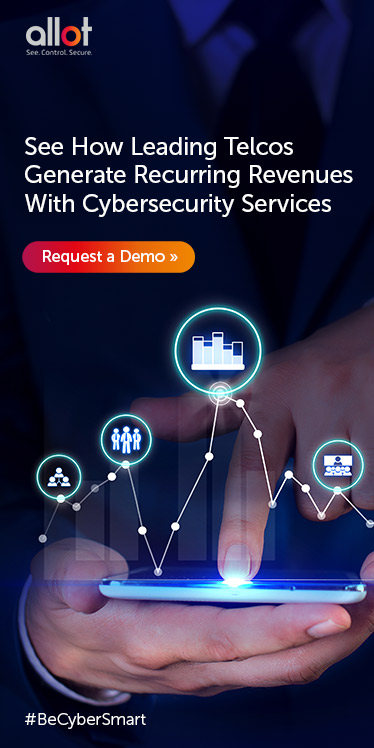What is Closed Loop Automation (CLA)
Closed-loop automation in Communication Service Provider (CSP) networks is a continuous process that monitors, measures, and assesses real-time network traffic and then automatically acts to optimize end-user Quality of Experience (QoE). CLA continuously:
- Identifies types of network traffic and collects performance metrics
- Calculates bandwidth demands and resource availability
- Maps these metrics to user service levels and perceived QoE
- Instantly sets optimal bandwidth allotment for each traffic component
The result is the best customer QoE and the optimal resource utilization, throughout the network.
Business Driven Evolution
Although these actions happen dynamically, it is important to note that human operators configure the automated actions and can manually modify them at any point within the loop to reflect business priorities. This permits a stepwise, low-risk, and business-driven evolution all the way to full CLA, delivering self-optimization while protecting current investments in personnel and processes.
CLA Beats Manual Human Analysis
Automation has long been prevalent in CSP operations, viewed as a better, more efficient way to solve well-known, well-defined problems. For example, everyone agreed it would be great if OSS Fault Management systems could automatically analyze tens of thousands of alarms to identify the root cause that represented the underlying problem. Clearly, this would be faster than human analysis and mean-time-to-resolution (MTTR) would be greatly reduced.
CLA in Next Generation Networks
As large-scale Software Defined Network/Network Functional Virtualization (SDN/NFV) implementations become prevalent and 5G networks begin to be deployed, it may seem as though sufficient CLA is already baked into the network infrastructure. However, both SDN/NFV and 5G Service Based Networking (SBN) focus on network KPIs and Quality of Service (QoS) to optimize network resources and service delivery. This focus on KPIs and QoS will improve many aspects of network performance but will not necessarily result in optimal end-user QoE.
To illustrate the difference between KPIs and KQIs, consider a video streaming service. The end-to-end service KPIs may indicate satisfactory QoS – and the QoE of the end user may be OK on a handheld device. But for a user on a large screen, that same QoS yields insufficient QoE. External CLA solutions should focus on Key Quality Indicators (KQI) and end-user QoE to ensure that customers receive the best services at the highest quality.
5G and CLA
With 5G’s anticipated IoT explosion, external CLA capabilities will also be required to address the ‘unknown unknowns’ presented by the expanded threat landscape. Machine Learning (ML) and Artificial Intelligence (AI) will need to power CLA security solutions that automatically detect new, unknown threats and quickly mitigate them.
Independent Software Vendors such as Allot are best positioned to deliver CLA with the ML and AI capabilities that can cost-effectively ensure optimal performance, security, and QoE.
The following table shows telecom challenges that can be resolved using CLA:
| Operational Challenge | CLA-Powered Solutions |
|---|---|
| The cost of capacity expansion | Congestion management and DDoS mitigation |
| Balancing backhaul consumption and QoE | Traffic shaping and QoE assurance |
| Encrypted video QoE | ML-driven video classification and optimization |
| QoE of business-critical applications | Application detection and prioritization |
| Top-tier customer satisfaction | Service plan based, equitable prioritization |
| Content-specific SLA and QoE assurance | Content detection and prioritization |
| The next big DDoS attack | Anomalous traffic detection and mitigation |
| Weaponized IoT running wild | Host-based anomaly detection and quarantining |
| Fraudulent data consumption | Detection and throttling of unbilled data users |
| Enterprise customer SLAs | Throughput policy enforcement |
| Reallocating resources for migration to 5g | Everything! |
Key CLA Takeaways from the accompanying CLA Telco Smart Trends Report:
- Embracing CLA is a Must – CSPs realize they need to embrace CLA and that failure to deploy it widely will prove costly.
- CLA Is a Journey – As CSPs in all tiers continue the journey towards becoming more customer centric, they will better appreciate the need for CLA and realize its advantages.
- IoT and Security Will Drive CLA Adoption – IoT growth and security needs will be the main drivers for CLA adoption. But for CSPs to take full advantage, they require CLA that focuses on end-user QoE, not just network Key Performance Indicators (KPIs).
- Think Growth, Think ISV – Independent Software Vendors (ISVs) are best positioned to deliver CLA with the ML and AI capabilities that cost-effectively ensure optimal performance, security, and Quality of Experience.
- The CLA Inherent in 5G is Not Enough – 5G Networks, by design, will feature CLA that handles known problems. But to address and solve unforeseen problems, and to meet QoE expectations, will require additional CLA functionality, powered by AI and ML.






